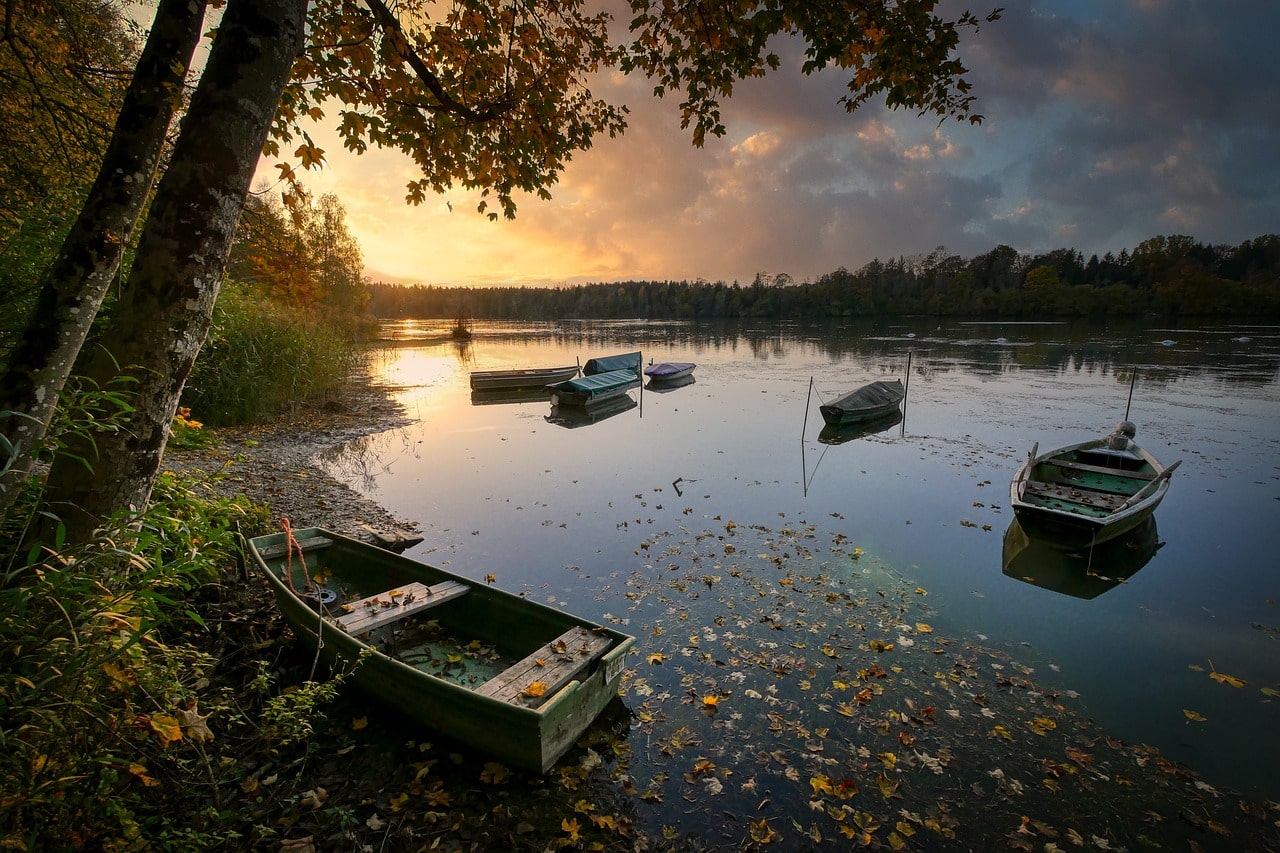Nestled within the scenic landscape of northwest Michigan, Clam Lake shimmers like a precious gem. Situated between the illustrious Torch Lake and the serene Lake Bellaire, Clam Lake forms part of the lower peninsula’s Elk River Chain of Lakes Watershed. Approximately 30 miles northeast of Traverse City and a relaxing 140-mile drive north of Grand Rapids, Clam Lake stands as a favored destination for enthusiasts of boating, fishing, skiing, and admiring nature’s wonders. The rich history of the Elk River Chain of Lakes Watershed dates back to the region’s first inhabitants, the Ojibwa people. Witnessing the early fur traders navigating through the lakes and rivers of northern Michigan, the Ojibwa were the first of many to appreciate the allure of the interconnected waterways. As the area saw an influx of American settlers in the mid-1800s, Clam Lake became a hub for farmers and loggers seeking to forge new lives. The advent of railroads in the 1890s brought tourists and anglers to the lakeside resorts and cottages that began to pepper the area. Although the lumber industry has waned, Antrim County, with its centerpiece Clam Lake, continues to captivate visitors with its cherry orchards and picturesque retreats, a legacy passed down through generations. Encompassing a vast expanse of 500 square miles, the Elk River Chain of Lakes Watershed cradles a 75-mile-long waterway comprising 14 lakes, interconnecting rivers, and around 250 tributaries. The waterway is divided by the Bellaire Dam and is divided into the Upper and Lower Chain of Lakes. At 439 acres, Clam Lake is the smallest among the Lower Chain, including the expansive Lake Bellaire, majestic Torch Lake, the tranquil Skegemog Lake, and the pristine Elk Lake. Flowing southward from Lake Bellaire, the water meanders through the scenic Grass River before nurturing the rich aquatic life of Clam Lake. With its average depth of 13 feet and maximum depth of 27 feet, Clam Lake’s shallow, warmer waters welcome spring anglers, often marking the first thaw in the chain come springtime. Tracing its path through the three-mile stretch of Clam Lake, the waterway eventually merges with the Clam River en route to the grand Torch Lake, the crown jewel of the Lower Chain of Lakes and Michigan’s second largest inland lake. Positioned near its neighboring lakes, Clam Lake serves as a standalone destination and a thoroughfare. Water sports enthusiasts flock to Clam Lake for its peaceful waters, serving as a respite for waterskiers and wakeboarders from Torch Lake’s choppy waters. Boaters, kayakers, and canoeists view Clam Lake as a peaceful haven and a gateway to a network of enchanting waterways. Lining its picturesque nine-mile shoreline are over 250 properties catering to year-round and seasonal residents, embodying a harmonious blend of development and nature conservation. At both ends of Clam Lake, private and public boating ramps offer convenient access to the tranquil waters. Motorized boats and personal watercraft dot the surface as boating enthusiasts navigate the waters of Clam Lake, their activities continually monitored for potential regulatory refinements. Adjacent to the entrance of Torch Lake, full-service marinas cater to boat rentals, providing easy access for eager tourists and residents alike. Boaters need to observe the designated no-wake zones at the river entrances of Clam Lake, ensuring a safe and sustainable aquatic environment for all. For fishing enthusiasts, Clam Lake’s shallow marshes serve as ideal habitats for pike and panfish, while deeper waters beckon with the promise of walleye, bluegill, muskie, perch, trout, crappie, bass, and more. Whether casting a line during the sunny summer days or braving the icy depths for winter ice fishing, all anglers must hold a valid Michigan fishing license. Since 1966, the Three Lakes Association has diligently monitored the water quality of the glacial Clam Lake, striving to raise awareness of water safety, invasive species, and environmental stewardship for residents and visitors alike. Located at the southeastern tip of Clam Lake, the Grass River meanders through a sprawling 1,443-acre nature preserve, embracing the concept of eco-tourism. The Grass River Natural Area offers over seven miles of diverse trails meandering through five distinct ecozones, each boasting a unique blend of plant species and wildlife. From deer and snowshoe hares to foxes and coyotes, the area thrives with biodiversity, while over 60 avian species grace the skies, adding a symphony of calls to the serene environment. Accessible to everyone, the nature preserve is a testament to the county’s commitment to preserving its natural heritage. Venturing beyond the tranquil shores of Clam Lake, residents find themselves within arm’s reach of the bustling village of Bellaire to the north and Alden to the south. These quaint locales offer a marvelous array of shops, gastronomic delights, museums, and recreational activities, providing ample avenues for exploration and leisure. For a more extensive outing, the vibrant city of Traverse City beckons with its diverse offerings, from the famed National Cherry Festival to an eclectic mix of boutiques, galleries, and dining experiences, ensuring a day of endless discovery. As the autumn foliage makes way for winter’s embrace, Clam Lake becomes a haven for winter sports enthusiasts. From cross-country skiing to snowshoeing, the gently sloping hillsides and winding trails invite visitors to embrace the winter wonderland. Throughout the seasons, Clam Lake remains a haven for recreational pursuits, beckoning visitors to select from an array of vacation rentals, campgrounds, or real estate properties nestled along the shores of Clam Lake and its neighboring Chain of Lakes. A testament to enduring family traditions and unspoiled beauty, Clam Lake awaits a beacon of tranquility and charm for all who seek its embrace.

